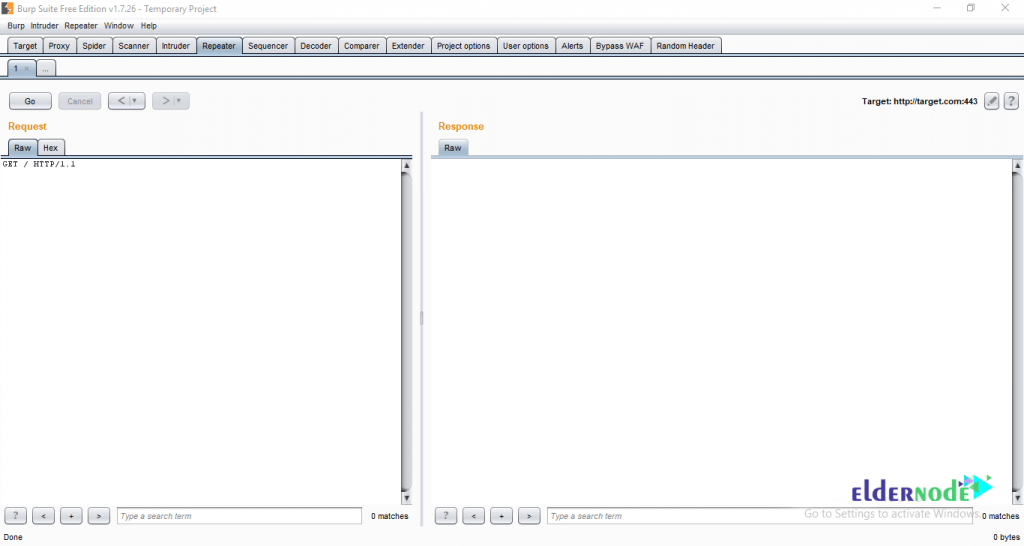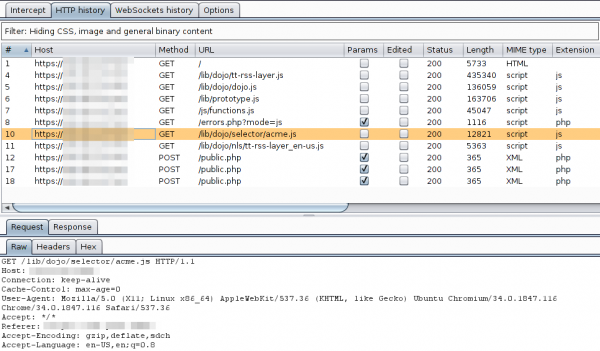

Additionally, it supports both manual and automated testing, as well as custom encryption/decryption plugins, making it a versatile solution for different penetration testing scenarios. Proxy->Options->Misc->Dont send items to Proxy history or live tasks.
#Burp suite repeater history how to
In the same line, Burp repeater is one of the burp suite tools designed to repeat HTTP(S). shows how to use Stepper, a natural evolution of Burp Suites Repeater tool to. The extension also offers the ability to customize the encryption and decryption process by writing custom logic using JavaScript and Node.js, making it a highly adaptable tool for various needs. Know that penetration testing uses the method known as fuzzing.

However, these logs go to separate text files and our customer is insisting that everything be in the project file. It enables easy encryption and decryption of requests during testing, which can help evade detection and bypass security measures. Burp has logging for Repeater and other tools, which can be enabled using Project Options > Misc > Logging. To use the extension, start BurpSuite application and set up a python environment by providing the jython.jar file in the Options tab under Extender.The Pycript extension for Burp Suite is a valuable tool for penetration testing and security professionals. It uses the already crawled / historic urls from WayBackMachine. Use this Burp Suite tutorial to customize attacks on Web apps via SQLi and XSS bugs. Within the previous article, we see some of the features of the Sequencer tab. Please note that no crawling is done during the assessment. Our Burp Suite tutorial’s second part covers intruder and repeater. This article is a part of the Guide for Burp Suite series. The extensions aims to add more such sources as well as asset types be a one stop shop for all things related to the history of assets. The URLs can be easily copied from their and tested further for security issues. The extension acts as a passive scanner which extracts the domain(s) that are in scope, identifies their historic URLs from WayBackMachine ( ) and lists them under the issues section. Probing these hidden pages (and sometimes interesting dynamic parameters like &url=, &file=, etc.) uncover serious security issues at times as these are not caught by security scanners and also identified by the teams performing such assessments. A good way to see this in action is by testing for the same SQLi above but using different payloads. Go to the Repeater tab to see that your request is waiting for you in its own numbered tab. Burp Repeater allows you to resend requests in order to monitor the behavior of the application based on specific requests. Step 4: Send the request to Burp Repeater Right-click on any of the GET /productproductId. limited-time promotional code, online contest pages, etc.). Let's use Burp Repeater to look at this behavior more closely. Many times this will help uncover URLs/parameters which you might not discover while crawling the application as there are no more direct links to these pages on the website anymore, but the pages are still active (e.g. The idea of the extension is to have a quick and easy way to track historic details of an asset in the Burp interface without the need to run another command or invoke another interface.

Hence, we created a BurpSuite Extension which could quickly track the history of the assets in scope and we came up with ‘ Asset History‘.

Another prominent technique that has helped us uncover critical security issues in our pentests/bughunting journeys, is looking at the history of the identified/target assets, for which one of the tools that we use is WayBackurls by Tom Hudson.ĭuring an assessment recently, we realized that this is something we need to do each time, so why not automate this and make it a part of the process. As they say, you can’t secure what is not known to you.Īs mentioned in one of our previous tool-releases, for web application pentests, we always use our BurpSuite Extension – Asset Discover to identify if there are any other related assets that should be part of the scope. Whenever performing any security assessment, identifying the Attack Surface is one of the first and foremost tasks. Burp, also known as Burp Suite, is a collection of tools for web application penetration testing.


 0 kommentar(er)
0 kommentar(er)
